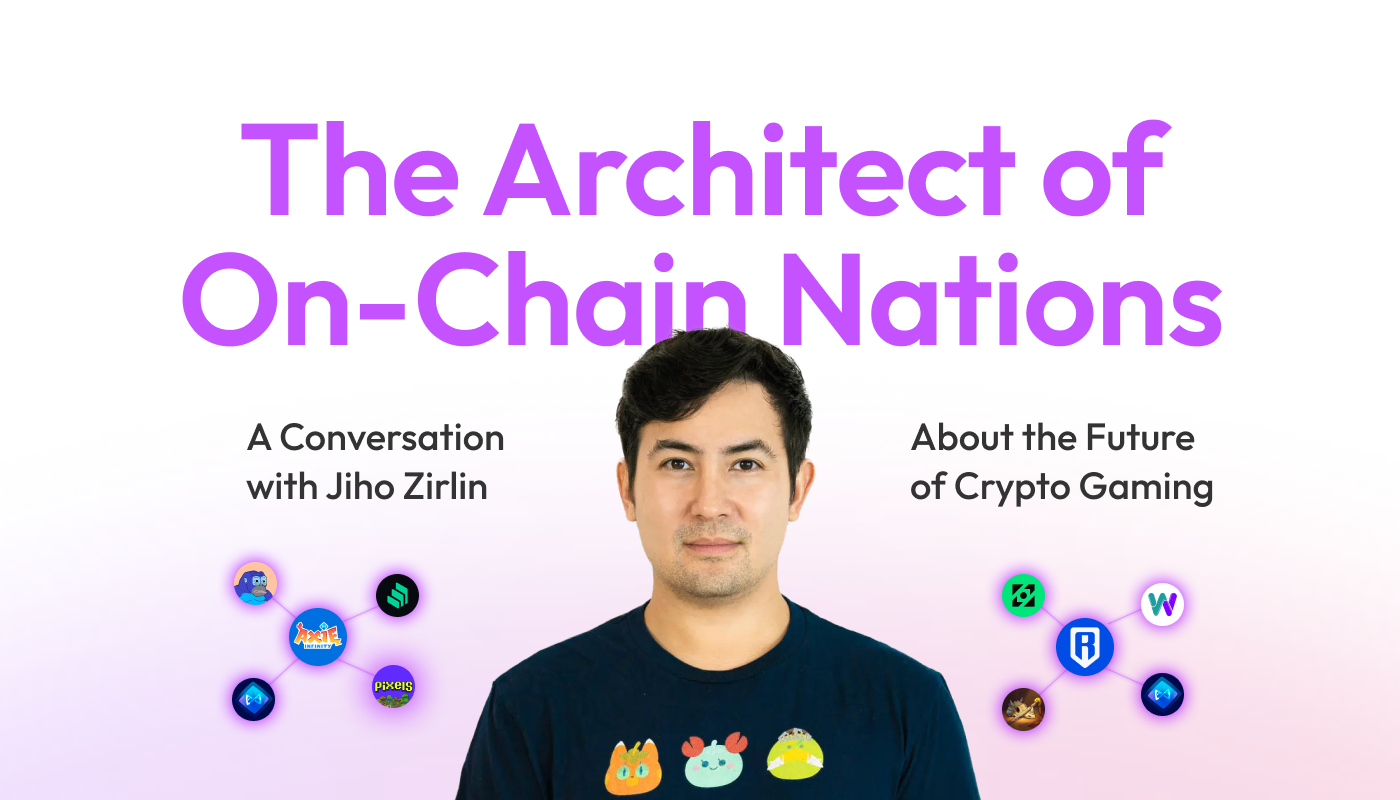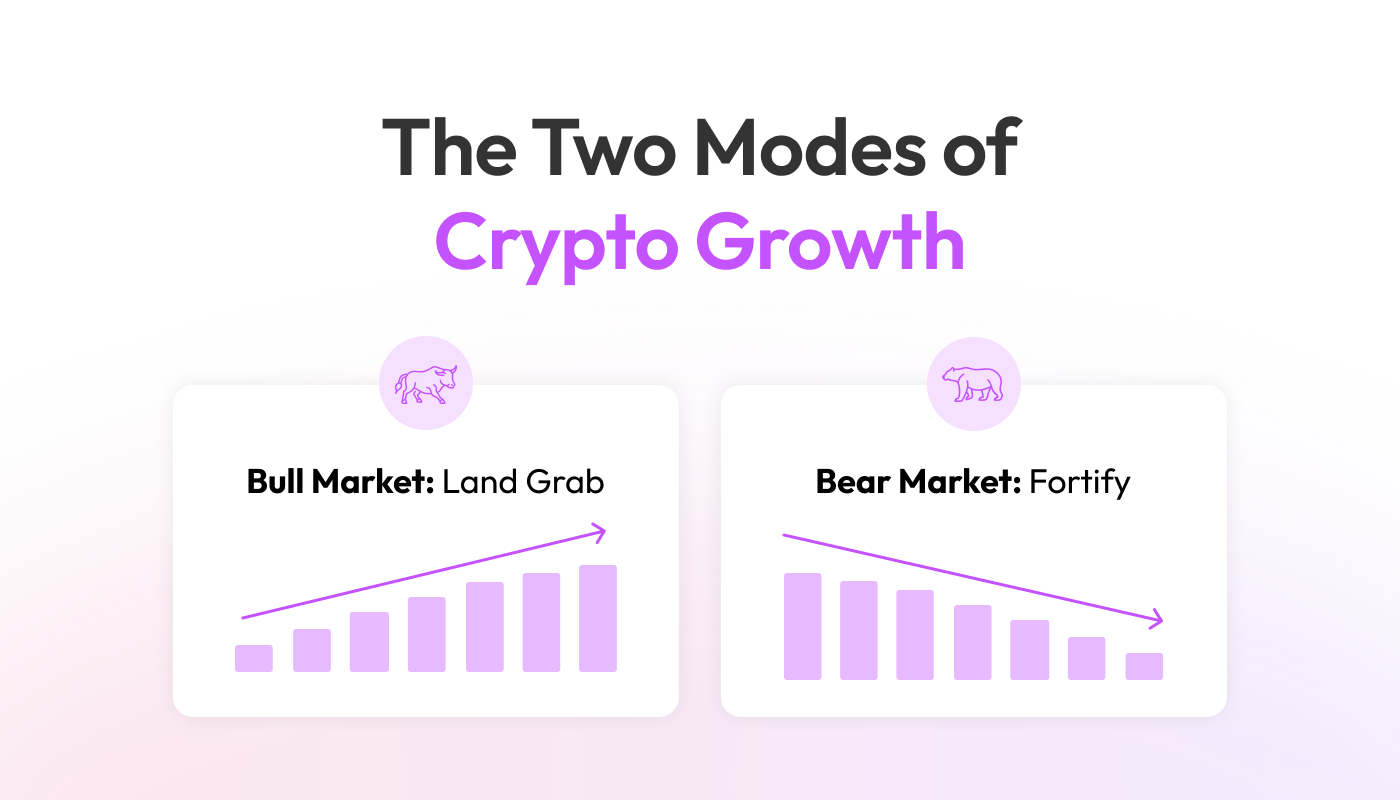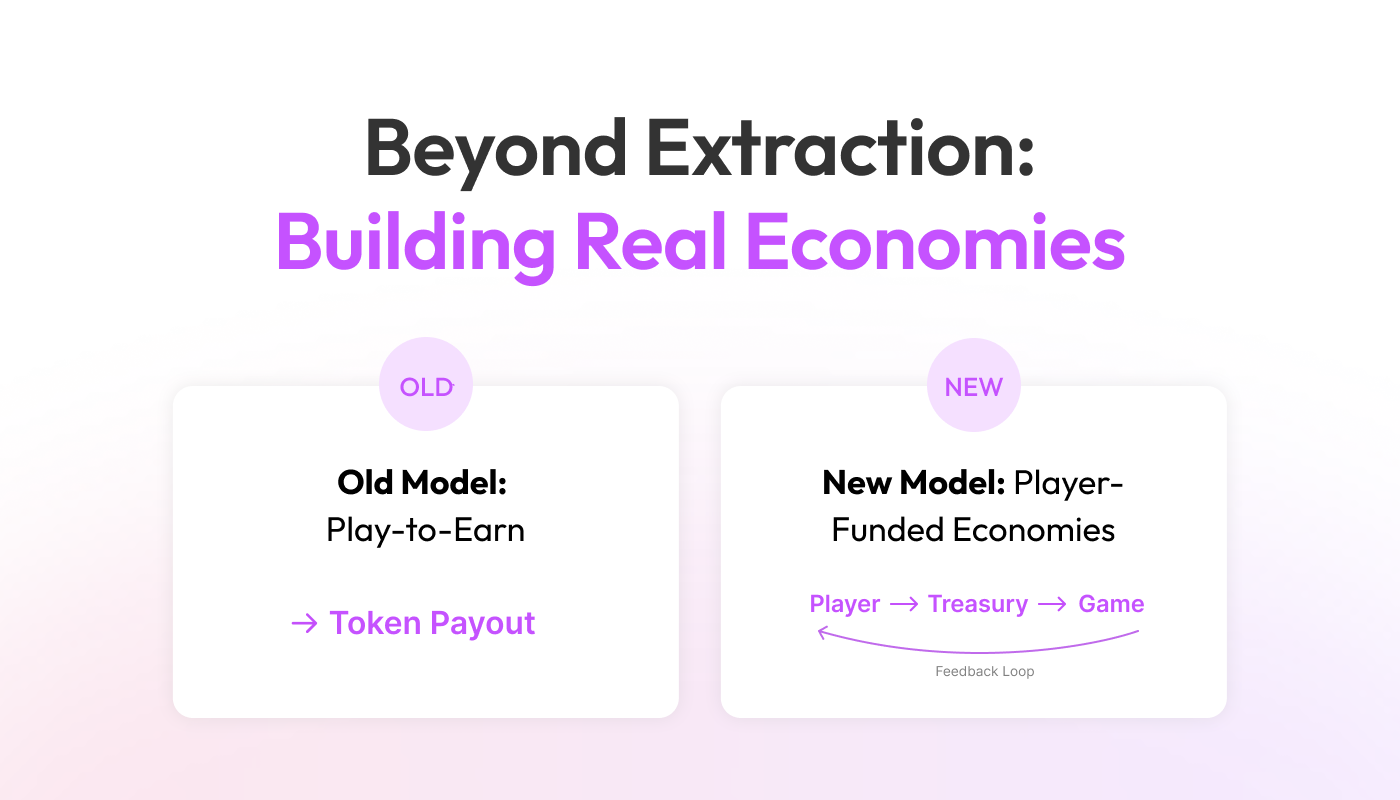The State of Crypto Gaming: A Playbook for 2026 and Beyond with Jiho from Axie Infinity

The ghost of 2021 still haunts the crypto gaming narrative. Most people hear the term and picture a speculative, unsustainable Play-to-Earn bubble that has already burst. They remember the headlines about Axie Infinity scholars earning thousands of dollars monthly, only to watch it all come crashing down.
They're looking at the past. The on-chain reality of 2025 tells a different story, one of resilience, evolution, and sophisticated new models that are quietly building the foundation for mainstream adoption.
To get the real alpha, we sat down with a legend who has seen it all: Jeffrey "Jiho" Zirlin, co-founder of Sky Mavis, the powerhouse behind Axie Infinity and the Ronin Network. We combined his insights with our on-chain data analysis at Addressable.io to create a definitive guide on the real state of Web3 gaming.
As Jiho himself said after seeing our data:
"Asaf and Addressable have compiled one of the most interesting data sets in Crypto for marketers. Data-driven experimentation will get Crypto beyond the current echo chambers, was a joy to sit down and chat!"
This isn't another list of trends. This is the new playbook, backed by real on-chain intelligence and battle-tested wisdom from the trenches of Web3 gaming.
The First Rule of Crypto Gaming: The Market is a Season, Not a Straight Line

One of Jiho's most crucial insights is that Web3 growth is cyclical, and smart teams must act accordingly. Unlike traditional gaming, where user acquisition follows relatively predictable patterns tied to game releases and seasonal events, crypto gaming dances to the rhythm of broader market sentiment.
"Web3 is more like a seasonal business where it's like during the bull market, it's kind of like the holiday season. There's a land grab... And then there are bear markets where it's like, okay, if it's really hard and expensive to acquire users right now, where am I investing my resources?" - Jeffrey Zirlin
The takeaway is clear: user acquisition costs fluctuate wildly with market sentiment. During the 2021 bull run, customer acquisition costs (CAC) for crypto games reached astronomical levels, with some projects spending hundreds of dollars per user. In the subsequent bear market, those same users could be acquired for a fraction of the cost, but with much lower lifetime values.
Winning teams don't just build; they time their growth sprints strategically:
- Bear Market Strategy: Focus on product development, community building, and creating a core group of evangelists. This is when you build your foundation, refine your tokenomics, and prepare for the next wave.
- Bull Market Strategy: Deploy aggressive user acquisition campaigns, launch tokens, and scale infrastructure. This is when you harvest the seeds planted during the quiet times.
Using wallet intelligence platforms like Addressable.io, teams can now track these cycles in real-time, identifying when their target audiences are most active on-chain and optimizing their launch timing accordingly.
Beyond Play-to-Earn: The New Sustainable Models

The old model of simply paying users to play is dead. The unsustainable economics of early Play-to-Earn games, where new player money was the only thing funding rewards for existing players, has given way to more sophisticated approaches. The conversation has matured to focus on real revenue and sustainable player-funded economies.
"Right now, if you look at which tokens are performing well, it's tokens that are able to have buybacks, and buybacks are typically a function of are you able to generate revenue? So then the question becomes what revenue models are working for Web3 Games?" - Jeffrey Zirlin
The most promising new models are built on deeper engagement and sustainable economics:
Risk-to-Earn: The Competitive Evolution
Games like Cambria are pioneering this model, where players pay to enter a seasonal competition, and the prize pool is distributed to the winners. It's essentially tournament gaming with crypto rails, a sustainable, player-funded economy that doesn't rely on constant token inflation. This model works because:
- Players understand the value exchange (entry fee for chance at prizes)
- The game doesn't need to mint new tokens to reward players
- Skilled players can genuinely earn through competition, not grinding
Guild Systems 2.0: The Patron Economy
Guilds are making a comeback, but with a sophisticated twist. Instead of the scholarship model where guilds extracted value from players, new guild systems encourage whales to sponsor other players, creating a symbiotic relationship:
- Whales pay for others to play, getting a share of potential winnings
- New players get free entry into premium games
- Games benefit from increased liquidity and player base
- The entire system is transparent and verifiable on-chain
Hybrid Models: The Best of Both Worlds
The most successful games are now combining traditional monetization (battle passes, cosmetics, premium features) with crypto-native elements (tradeable assets, governance tokens, DeFi integration). This creates multiple revenue streams and appeals to both Web2 and Web3 audiences.
The On-Chain Truth: Your Players Are Not Who You Think They Are

During our interview, we presented Jiho with our comprehensive on-chain analysis from Addressable.io of the Axie/Ronin community. The data revealed a surprising truth that challenges everything most developers assume about their audience: the number one interest of his audience isn't just gaming; it's "Trading and Market Analysis."
"A lot of the people that were onboarded into Axie and Ronin were people that had only been trading on Binance before... Web3 gamers are traders, they're speculators, that's part of their persona. Teams that don't understand that and just think that they're normal gamers, they're going to have a hard time." - Jeffrey Zirlin
This revelation has profound implications for game design and marketing:
Design Implications:
- Economic Gameplay Matters: Your players are calculating ROI, not just having fun. They want games that respect their financial acumen.
- Market Mechanics Are Features: Trading, arbitrage, and speculation aren't bugs, but they're features your players expect.
- Transparency Is Non-Negotiable: These players can read smart contracts and analyze tokenomics. Don't try to hide anything.
Marketing Implications:
- Speak Their Language: Marketing that focuses solely on gameplay will miss the mark. Include economic opportunities and investment potential.
- Target Where They Are: Your players are on DeFi platforms, NFT marketplaces, and crypto Twitter (X), not just gaming forums.
- Build for Sophistication: These aren't casual mobile gamers. They're running multiple wallets, using DEX aggregators, and managing complex portfolios.
This is the most critical insight for any builder in the space. You are not marketing to traditional gamers. You are marketing to a new generation of sophisticated, on-chain investors who see your game as part of their broader financial activity. Addressable.io's wallet intelligence can help you identify and understand these multi-faceted users, revealing their complete on-chain behavior across gaming, DeFi, and NFT activities.
The Data Advantage: Understanding Your True Audience
The traditional gaming industry relies on surveys, focus groups, and behavioral analytics within their closed ecosystems. Web3 gaming has a superpower: every action is recorded on-chain, creating an unprecedented opportunity for data-driven development and marketing.
What On-Chain Data Reveals:
- Cross-Platform Behavior: See what other games, DeFi protocols, and NFT projects your players interact with
- Wallet Wealth and Activity: Understand the actual purchasing power and transaction history of your audience
- Network Effects: Identify influential wallets and natural community leaders
- Retention Patterns: Track player migration between games and identify what makes them stay or leave
Addressable.io's platform transforms this raw blockchain data into actionable intelligence, allowing teams to:
- Segment audiences based on actual on-chain behavior
- Identify high-value players before they even try your game
- Create targeted campaigns for specific wallet cohorts
- Measure true ROI of marketing campaigns by tracking on-chain conversions
The Future: Gamified DeFi and the On-Chain Social Graph

So, where is this all heading? According to Jiho, the future is about blurring the lines between gaming and finance, creating an interconnected ecosystem where every on-chain action contributes to a user's digital identity and earning potential.
"What's missing with Ronin DeFi is actually a gamification layer on top of it... Gamers love rituals, they love routines. They respond really well to incentives for certain actions." - Jeffrey Zirlin
The Universal Questing Layer
The ultimate vision is a universal questing layer for blockchain networks like Ronin, where:
- Playing games earns you DeFi rewards
- Using DeFi protocols unlocks game content
- Your on-chain history becomes your gaming resume
- Achievements are portable across all ecosystem apps
This creates a rich, data-driven social graph of gamers that developers can then use for hyper-specific targeting. Instead of wasting money on broad ads, you can directly reward and incentivize users based on their verifiable on-chain history.
The Reputation Economy
Imagine a world where:
- Your PvP ranking in one game gives you early access to another
- Your DeFi yield farming history unlocks special economic gameplay modes
- Your NFT collection grants you VIP status across multiple games
- Your on-chain reputation score determines your borrowing power in gaming guilds
This interconnected reputation system is already being built. Projects are creating on-chain achievement systems, soulbound tokens for gaming accomplishments, and cross-game progression systems.
The Builder's Roadmap: Practical Steps for 2026 and Beyond
Based on Jiho's insights and our on-chain data analysis, here's the practical roadmap for builders entering the space:
1. Understand Your Real Audience
Before writing a single line of code, analyze the on-chain behavior of your target market. Use platforms like Addressable.io to understand:
- What games they currently play
- Their DeFi activity levels
- Their average wallet balances
- Their NFT preferences
- Their risk tolerance based on trading history
2. Design for the Trader-Gamer Hybrid
Your players aren't choosing between gaming and trading but they're doing both simultaneously. Design systems that:
- Reward market knowledge and timing
- Create arbitrage opportunities
- Allow for different risk/reward strategies
- Integrate with broader DeFi ecosystems
3. Build for the Cycle
Plan your development and launch timeline around market cycles:
- Use bear markets for building and community cultivation
- Prepare marketing war chests for bull market deployment
- Design tokenomics that can survive both extremes
- Create engagement mechanics that work regardless of token price
4. Embrace Transparency
Your players can and will analyze everything:
- Open-source your smart contracts
- Publish regular economic reports
- Create dashboards showing game economy health
- Be honest about challenges and changes
5. Think Ecosystem, Not Island
No Web3 game is an island. Success comes from integration:
- Partner with other projects in your ecosystem
- Create interoperability with popular protocols
- Build on established chains with existing user bases
- Contribute to shared infrastructure and standards
The Power of Wallet Intelligence
This is the power of a wallet-first approach, and it's the future of crypto gaming. At Addressable.io, the platform is built to provide this on-chain intelligence, turning anonymous wallets into rich user profiles that you can understand and engage.
The traditional gaming industry spends billions on user acquisition with limited ability to target or understand their audience before they install. Web3 gaming, powered by on-chain analytics from platforms like Addressable.io, can:
- Pre-identify high-value players based on their wallet history
- Create look-alike audiences from your best players' on-chain behavior
- Track the true customer journey from first touch to on-chain conversion
- Measure cross-game player lifetime value
Conclusion: The Renaissance, Not the Ruins
The crypto gaming space isn't recovering from 2021but it's evolving into something entirely new. The speculative bubble had to burst for sustainable models to emerge. The tourist traders had to leave for the true builder-players to thrive.
What we're witnessing now is not the aftermath of failure but the foundation of a new gaming paradigm where:
- Players truly own their assets
- Economies are transparent and participatory
- Success is measured in sustainable revenue, not token pumps
- Communities have real governance power
- Games interconnect in ways previously impossible
As Jiho's journey with Axie Infinity shows, the path isn't always smooth, but the destination is revolutionary. The teams that understand the true nature of their audience, trader-gamers navigating an interconnected on-chain world, will be the ones that define the next era of gaming.
The playbook is clear: understand your on-chain audience with deep wallet intelligence, build sustainable economies, time the market cycles, and create experiences that respect both the gamer and the investor in every player.
The ghost of 2021 isn't haunting us but it's teaching us. And the lessons learned are building the foundation for a gaming future that's more open, more profitable, and more player-centric than anything that came before.
Get started with Ronin:
https://wallet.roninchain.com/app
https://roninchain.notion.site/ronin-wiki
Want to understand your Web3 gaming audience with unprecedented depth? Explore Addressable.io's on-chain intelligence platform and discover who your players really are, what they really want, and how to reach them effectively.








